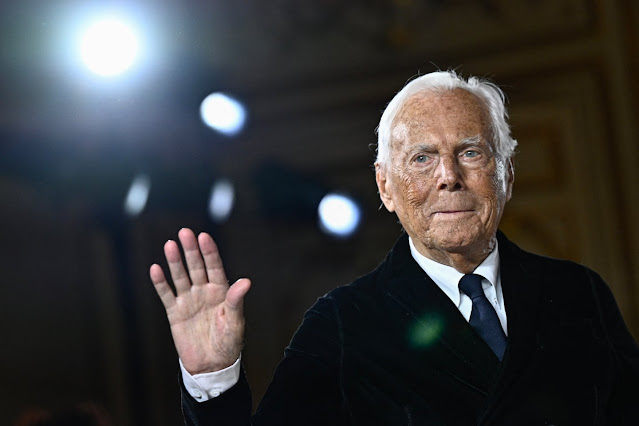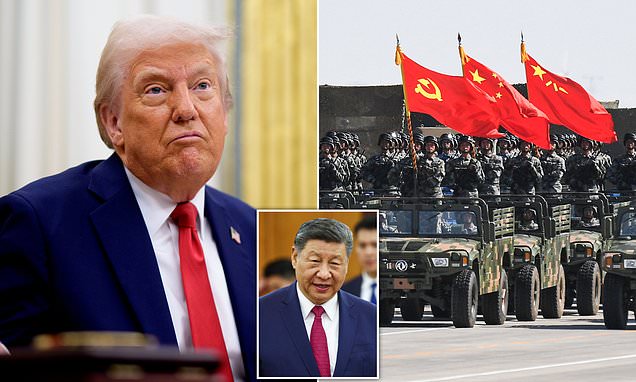On September 4, 2025, the fashion world was struck with profound sorrow as the Armani Group announced the passing of its founder, Giorgio Armani, at the age of 91. The legendary Italian designer, often referred to as “Re Giorgio” or “King Giorgio,” died peacefully at his home in Milan, surrounded by loved ones. Known for revolutionizing modern fashion with his minimalist yet powerful designs, Armani built a global empire worth over €2.3 billion, redefining elegance and influencing generations. His death marks the end of an era for an industry he helped shape, prompting tributes from designers, celebrities, and world leaders. This article explores Armani’s extraordinary life, his transformative contributions to fashion, the circumstances surrounding his passing, and the legacy he leaves behind.
The Announcement and Global Reaction
The Armani Group released a statement on September 4, 2025, confirming the designer’s death: “With infinite sorrow, the Armani Group announces the passing of its creator, founder, and tireless driving force: Giorgio Armani. Il Signor Armani, as he was always respectfully and admiringly called by employees and collaborators, passed away peacefully, surrounded by his loved ones. Tireless, he worked until his final days, dedicating himself to the company, its collections, and the diverse and ever-changing projects both existing and in progress.” The statement highlighted Armani’s relentless commitment, noting that a funeral chamber would be set up in Milan over the weekend, with a private funeral to follow at an unspecified date.
The news reverberated across the globe, with tributes pouring in from the fashion community and beyond. Italian Prime Minister Giorgia Meloni described Armani as “an icon, a tireless worker, a symbol of the best of Italy,” praising his elegance, sobriety, and creativity. Fellow designer Donatella Versace posted on Instagram, “The world lost a giant today, he made history and will be remembered forever.” Vogue’s Laura Ingham called him a “true gentleman” and “titan of the industry,” noting that “his legacy is woven not only into fashions past and present but will continue to shape its future for generations to come.” Social media platforms, particularly X, buzzed with posts mourning the loss of a visionary whose name became synonymous with timeless style.
Giorgio Armani: A Life in Fashion
Born on July 11, 1934, in Piacenza, a small town in northern Italy, Giorgio Armani’s journey to becoming a global fashion icon was anything but conventional. The son of Ugo Armani, an accountant, and Maria Raimondi, a homemaker, Armani initially pursued a career in medicine, studying at the University of Milan for two years before leaving to complete his mandatory military service. His entry into fashion was serendipitous, beginning with a job as a window dresser at La Rinascente, a Milan department store, in 1957. This role exposed him to the world of style, sparking a passion that would define his life.
Armani honed his craft under the mentorship of designer Nino Cerruti, working as a menswear designer from 1961 to 1970. In 1975, at the age of 41, he founded Giorgio Armani S.p.A. with his partner, Sergio Galeotti, selling their Volkswagen Beetle to raise the initial $10,000 needed to launch the brand. The debut collection, a men’s ready-to-wear line for spring/summer 1976, introduced the world to Armani’s signature aesthetic: a relaxed, unlined sports jacket paired with a T-shirt, which he described as “the alpha and omega of the fashion alphabet.” The design, revolutionary for its time, softened the rigid structure of traditional suits, revealing the body’s natural form and setting a new standard for modern elegance.
Armani’s breakthrough came in 1980 when he designed the wardrobe for Richard Gere in the film American Gigolo. The sleek, unstructured suits worn by Gere’s character, Julian Kaye, introduced Armani’s style to a global audience, cementing his reputation as a master of understated luxury. Over the decades, he expanded his brand to include womenswear, accessories, fragrances, cosmetics, sportswear, and even luxury hotels, creating an empire that spanned fashion, lifestyle, and hospitality. By 2025, the Armani Group employed over 9,000 people, operated 600 stores worldwide, and generated annual revenues of approximately $2.65 billion.
Redefining Fashion: Armani’s Innovations
Armani’s influence on fashion is unparalleled, driven by his ability to blend creativity with business acumen. He revolutionized menswear by deconstructing the traditional suit, removing shoulder pads and canvas linings to create a relaxed yet sophisticated silhouette. This innovation, introduced in the late 1970s, resonated with a new generation of professionals who sought style without stiffness. For women, Armani’s introduction of the power suit in the 1980s was transformative, offering a tailored, feminine alternative to the era’s oversized, opulent designs. His suits empowered women in professional settings, worn by figures like Hillary Clinton and Cate Blanchett, and became a symbol of strength and elegance.
Beyond clothing, Armani pioneered the concept of fashion as a lifestyle. His empire expanded into Emporio Armani, a more accessible line, and Armani Exchange, targeting younger audiences, as well as high-end couture through Armani Privé. He ventured into hospitality with Armani Hotels in Dubai and Milan, restaurants, bars, and even a basketball team, EA7 Emporio Armani Milan (Olimpia Milano). His collaborations with Hollywood, designing costumes for films like The Untouchables (1987), The Wolf of Wall Street (2013), and Batman franchises, made him a red-carpet staple, with stars like Diane Keaton, Julia Roberts, and Leonardo DiCaprio donning his designs.
Armani’s commitment to innovation extended to technology and social responsibility. In 2007, he partnered with MSN to live-stream his Paris collection, a pioneering move in digital fashion. During the COVID-19 pandemic in 2020, he was the first major designer to cancel a physical show, opting for a virtual presentation, and donated €2 million to Italian hospitals while converting his factories to produce medical overalls. These actions underscored his adaptability and dedication to societal good, earning him accolades like the French Legion of Honour and Italy’s Order of Merit for Labour.
The Circumstances of His Passing
Armani’s death comes after a period of declining health, which had raised concerns in the fashion world. In June 2025, he missed Milan’s Men’s Fashion Week for the first time in his career, a significant absence for a designer known for his hands-on approach. The Armani Group stated that he was “recovering at home” from an undisclosed condition, and he directed his July 2025 Armani Privé show in Paris remotely, a first in his 20-year couture career. Despite his health challenges, Armani remained active, overseeing collections and planning a major event to celebrate the 50th anniversary of his brand during Milan Fashion Week in September 2025.
His passing at home in Milan, surrounded by loved ones, reflects the private nature of a man who, despite his global fame, valued discretion. The Armani Group’s statement emphasized his tireless work ethic, noting that he “worked until his final days.” A public memorial will be held at the Teatro Armani in Milan on Saturday and Sunday, allowing fans and industry peers to pay their respects, followed by a private funeral in accordance with his wishes.
The Legacy of Giorgio Armani
Giorgio Armani’s legacy is multifaceted, encompassing his contributions to fashion, business, and culture. His minimalist aesthetic, characterized by clean lines, neutral palettes, and luxurious fabrics, reshaped how the world viewed elegance. Unlike many designers who chased trends, Armani remained loyal to his vision, creating timeless pieces that transcended seasons. “I design for real people. There is no virtue whatsoever in creating clothes and accessories that are not practical,” he once said, a philosophy that resonated with clients from boardrooms to red carpets.
His business model, maintaining sole ownership of his privately held company, was a rarity in an industry dominated by conglomerates like LVMH and Kering. Forbes estimated his net worth at $12.1 billion at the time of his death, largely from his 99.9% stake in the Armani Group and investments like a 2% stake in EssilorLuxottica and a $29 million yacht. His foresight in establishing the Giorgio Armani Foundation in 2016 ensured the company’s future, with his niece Roberta Armani and longtime collaborator Leo Dell’Orco named as key figures in his succession plan. In a 2021 Vogue interview, he hinted at openness to partnerships but prioritized independence, a stance that preserved his creative control.
Armani’s influence extended beyond fashion into film, music, sports, and philanthropy. His designs for over 250 productions, including American Gigolo and Miami Vice, shaped pop culture, while his uniforms for Alitalia and Olympic teams showcased his versatility. His philanthropy, particularly during the COVID-19 crisis, highlighted his commitment to Italy, earning him admiration as a national treasure.
The Future of the Armani Brand
Armani’s death raises questions about the future of his empire. The Giorgio Armani Foundation, holding a 0.1% stake, is tasked with guiding the company, but the absence of a clear heir—Armani had no children—complicates succession. Roberta Armani and Leo Dell’Orco are expected to lead, but industry analysts speculate about potential mergers or acquisitions. Armani’s insistence on independence may face challenges in a competitive market, yet his brand’s strong identity and global presence provide a solid foundation.
The upcoming 50th-anniversary celebrations, including an exhibition at Milan’s Pinacoteca di Brera and a runway show, will now serve as a tribute to his legacy. The Armani Group has vowed to continue his vision, with employees and family stating, “We commit to protecting what he built with respect, responsibility, and love.” The brand’s focus on timeless elegance and innovation positions it to endure, but navigating the post-Armani era will require strategic leadership.
Societal and Cultural Impact
Armani’s passing marks a pivotal moment for the fashion industry and Italian culture. As one of the last independent designers, he represented a golden era of Italian fashion, alongside peers like Valentino and Versace. His death prompts reflection on the industry’s evolution, from artisanal craftsmanship to corporate conglomerates. His ability to bridge high fashion and mass appeal, through lines like Emporio Armani and Armani Exchange, democratized luxury, influencing designers worldwide.
In Italy, Armani was a cultural icon, embodying the nation’s creativity and resilience. His rise from Piacenza to global stardom mirrored Italy’s post-war transformation into a fashion powerhouse. Tributes from figures like Italy’s Culture Minister Alessandro Giuli, who called him “a leading figure in Italian culture,” underscore his role in shaping national identity. Globally, his impact is evident in the enduring popularity of his designs, with vintage Armani pieces thriving in secondhand markets and celebrities like Cate Blanchett continuing to wear his creations.
Challenges and Controversies
Armani’s career was not without challenges. Critics occasionally accused him of repetition, arguing that his minimalist style became predictable. Yet, his consistency was also his strength, appealing to clients who valued reliability over fleeting trends. His massive advertising budgets ensured favorable press, but they also sparked debates about the commercialization of fashion journalism. Additionally, his decision to court celebrities, starting with American Gigolo, revolutionized red-carpet fashion but drew criticism for prioritizing fame over substance.
His health-related absences in 2025 fueled speculation about his ability to lead, raising questions about succession. While Armani addressed these concerns by establishing the foundation, the lack of a clear successor remains a challenge. The fashion industry’s shift toward sustainability and inclusivity also poses questions about how the Armani brand will adapt, given its traditional focus on luxury.
Conclusion
Giorgio Armani’s death at 91 marks the end of a transformative era in fashion. From his humble beginnings in Piacenza to building a $12.1 billion empire, Armani redefined elegance with his minimalist designs and innovative business model. His influence spanned fashion, film, sports, and philanthropy, leaving an indelible mark on global culture. As the world mourns his loss, the Armani Group faces the challenge of carrying forward his vision without his guiding hand.
The tributes from peers, leaders, and fans reflect Armani’s universal appeal, while his legacy of timeless style ensures his influence will endure. The upcoming Milan Fashion Week celebrations will serve as a fitting tribute to a man who made elegance accessible and aspirational. Giorgio Armani, “Re Giorgio,” will forever remain a symbol of Italian creativity, resilience, and sophistication, inspiring future generations to design for “real people” with practicality and grace.






